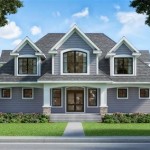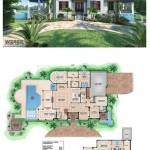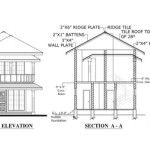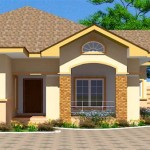Great House Plans for Retirement
Retirement marks a significant life transition, often accompanied by a desire for a change of scenery and a home better suited to a relaxed lifestyle. Choosing the right house plan is crucial for a comfortable and enjoyable retirement. This article explores key considerations and popular house plan features for retirees.
Single-Story Living
Navigating stairs can become challenging with age. Single-story homes eliminate this concern, promoting accessibility and safety. Ranch-style houses, bungalows, and ramblers offer convenient, step-free living, minimizing the risk of falls and facilitating mobility.
Open Floor Plans
Open floor plans create a sense of spaciousness and facilitate interaction within the home. They allow for seamless flow between living areas, making entertaining guests and spending time with family more enjoyable. This design also improves accessibility and makes it easier to navigate with mobility aids, if necessary.
Right-Sized Homes
Downsizing is a common theme in retirement. Smaller, right-sized homes offer several advantages: lower maintenance costs, reduced cleaning time, and increased affordability. This allows retirees to allocate more of their budget towards travel, hobbies, and other pursuits. Carefully consider current and future needs to determine the appropriate square footage.
Main-Floor Master Suites
Locating the master bedroom on the main floor provides easy access to all essential living areas. This feature is particularly beneficial for individuals with mobility limitations or those anticipating future mobility challenges. A main-floor master suite enhances convenience and reduces the need to use stairs frequently.
Accessible Bathrooms
Designing bathrooms with accessibility in mind is crucial for comfortable aging in place. Features such as walk-in showers, grab bars, wider doorways, and lever-style handles improve safety and independence. Consider incorporating these elements into both the master bathroom and any guest bathrooms.
Low-Maintenance Features
Retirement should be a time for relaxation and enjoyment, not burdened by excessive home maintenance. Opting for low-maintenance materials, such as durable siding, composite decking, and tile flooring, can significantly reduce upkeep time and costs. Consider drought-tolerant landscaping to further minimize outdoor chores.
Ample Storage
Even in smaller homes, adequate storage solutions are essential. Incorporating built-in shelving, walk-in closets, and a pantry can help keep belongings organized and the living spaces clutter-free. A dedicated storage area for holiday decorations, seasonal items, or hobby supplies can be particularly valuable.
Flexible Spaces
A guest room that can double as a home office, or a finished basement that serves as a hobby room, provides flexibility to adapt to changing needs and interests. Consider incorporating multi-functional spaces into the house plan to accommodate visiting family, pursue hobbies, or work from home.
Outdoor Living Areas
Enjoyable outdoor spaces can significantly enhance the retirement experience. A covered patio, a screened-in porch, or a deck provides comfortable areas for relaxing, entertaining, and enjoying the fresh air. Consider the local climate and personal preferences when designing outdoor living areas.
Universal Design Principles
Universal design principles focus on creating spaces that are usable by people of all ages and abilities. While not exclusively for retirees, these principles align perfectly with the needs of aging individuals. Features like wider hallways, lever-style door handles, and zero-step entries enhance accessibility and safety for everyone.
Energy Efficiency
Energy-efficient homes reduce utility costs, contributing to a more sustainable and affordable lifestyle. Incorporate features like energy-efficient windows, proper insulation, and energy-saving appliances to minimize energy consumption and lower monthly bills.
Consider Location and Community
The location of the home plays a significant role in retirement satisfaction. Consider proximity to healthcare facilities, recreational activities, cultural attractions, and family and friends. Research different communities and choose one that aligns with personal interests and desired lifestyle.
Consult with Professionals
Engaging with a qualified architect and builder is essential for bringing a retirement house plan to life. These professionals can offer valuable insights, ensure the design meets specific needs and preferences, and manage the construction process effectively. Communicate openly with them throughout the project.
Choosing the right house plan is a crucial step in planning for a fulfilling retirement. Careful consideration of the factors discussed in this article can lead to a home that promotes comfort, accessibility, and enjoyment for years to come.
:max_bytes(150000):strip_icc()/sparta-SL-1810-85462ab99fbd4675a64de1775c6d1bdf.jpg?strip=all)
15 Dreamy House Plans Built For Retirement

Small One Story 2 Bedroom Retirement House Plans Houseplans Blog Com

Small One Story 2 Bedroom Retirement House Plans Houseplans Blog Com

Small One Story 2 Bedroom Retirement House Plans Houseplans Blog Com

Empty Nester House Plans Retirement The Designers

Small One Story 2 Bedroom Retirement House Plans Houseplans Blog Com

Retired Couple Finds Floor Plan Forever Home The House Designers
:max_bytes(150000):strip_icc()/Adaptive-Cottage-Plan-SL2075-5cedf3dbee93457b96d46ba02da340e5.jpeg?strip=all)
15 Dreamy House Plans Built For Retirement

Starter Or Retirement Home Plan 83098dc Architectural Designs House Plans

Small One Story 2 Bedroom Retirement House Plans Houseplans Blog Com








